I’ve often thought of the Oregon Department of Transportation as our state’s de facto driving advocacy group. Given where the vast majority of their funding goes and their reluctance to do anything that reduces driving access, it’s a reasonable way to think about the agency.
So imagine my surprise when I saw an email from ODOT this morning where they went out of their way to promote taking the train over driving by slashing fares on the Amtrak Cascades line by as much as 30%. Starting next week you can buy a train ticket between Portland and Eugene (110 miles south) for just $17 — that’s cheaper than taking the bus! The new fares apply to all Oregon stops including Oregon City, Salem, and Albany.
In a statement about the news, ODOT Public Transportation Division Administrator Karyn Criswell said:
“We looked at the high cost of driving on I-5 in the Willamette Valley and realized we could offer something better. The rates are more affordable, the ride is extremely comfortable and it’s much more relaxing than fighting traffic.”
“It’s a great time to leave the car at home and travel stress-free!” the announcement reads.
The push for more Amtrak ridership comes after a summer where many Oregonians were impacted by very high gas prices and local policymakers are hearing about a renewed push for high speed rail.
While this price cut is sweet, it may not be enough of an incentive to ditch the car for folks concerned about travel times. The 110-mile trip takes about two hours by car, and the fastest train trips take about three hours – and that’s without any delays.
ODOT, who oversees the Cascades line and contracts Amtrak to run trains on it, is still trying to recover after two-plus years of reduced ridership due to the covid pandemic and other issues.
Amtrak Cascades ridership did a nose-dive in 2020 when the virus first took hold; but it has made a healthy rebound this year. Ridership for the third quarter of 2022 is only 11% below 2019 levels.


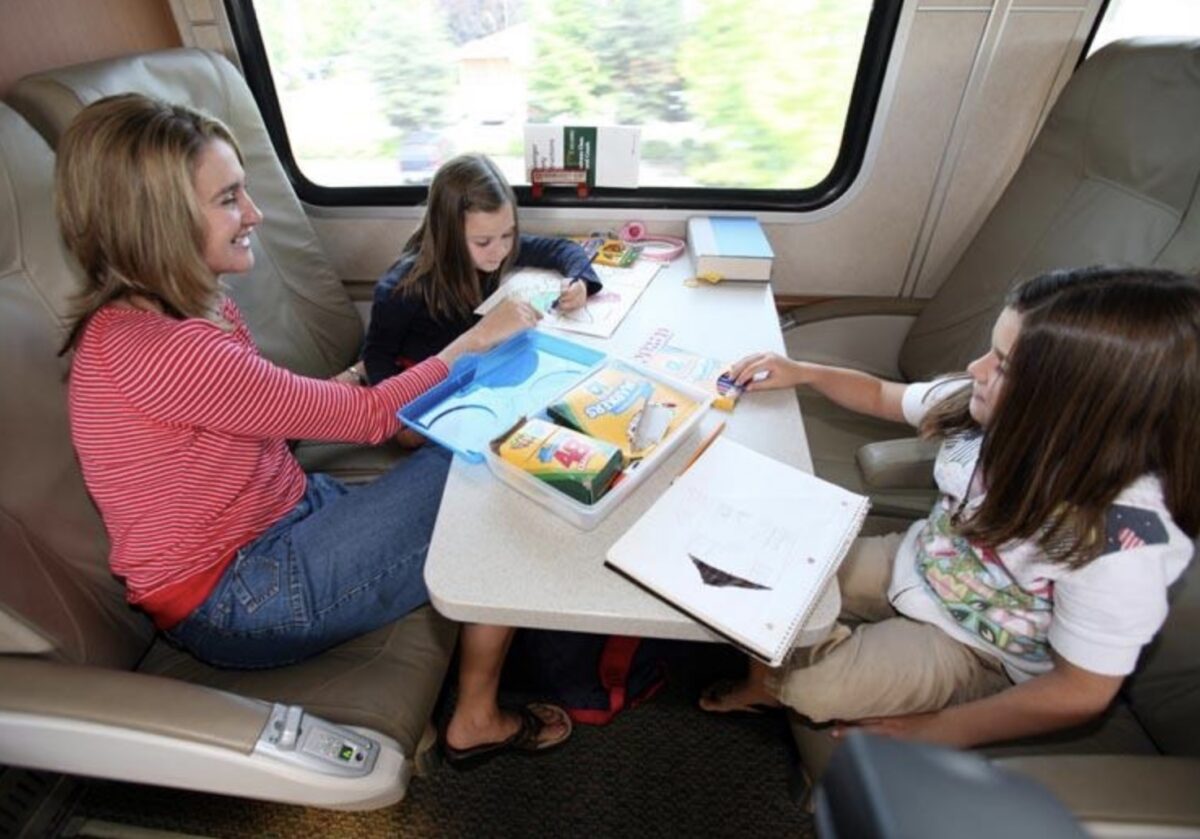
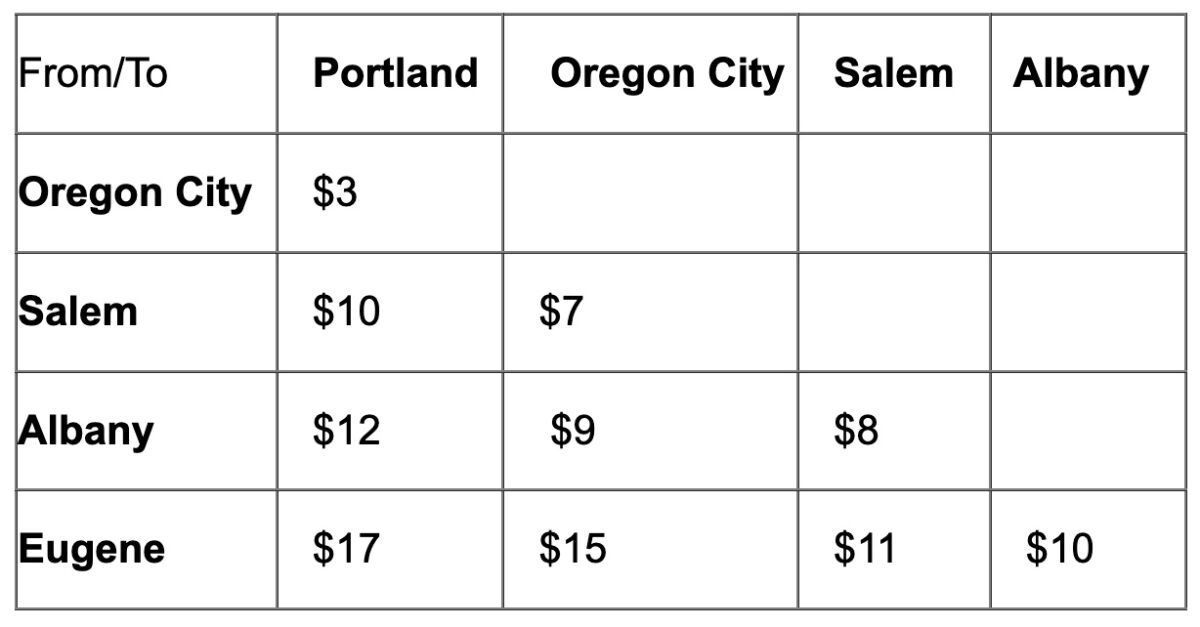
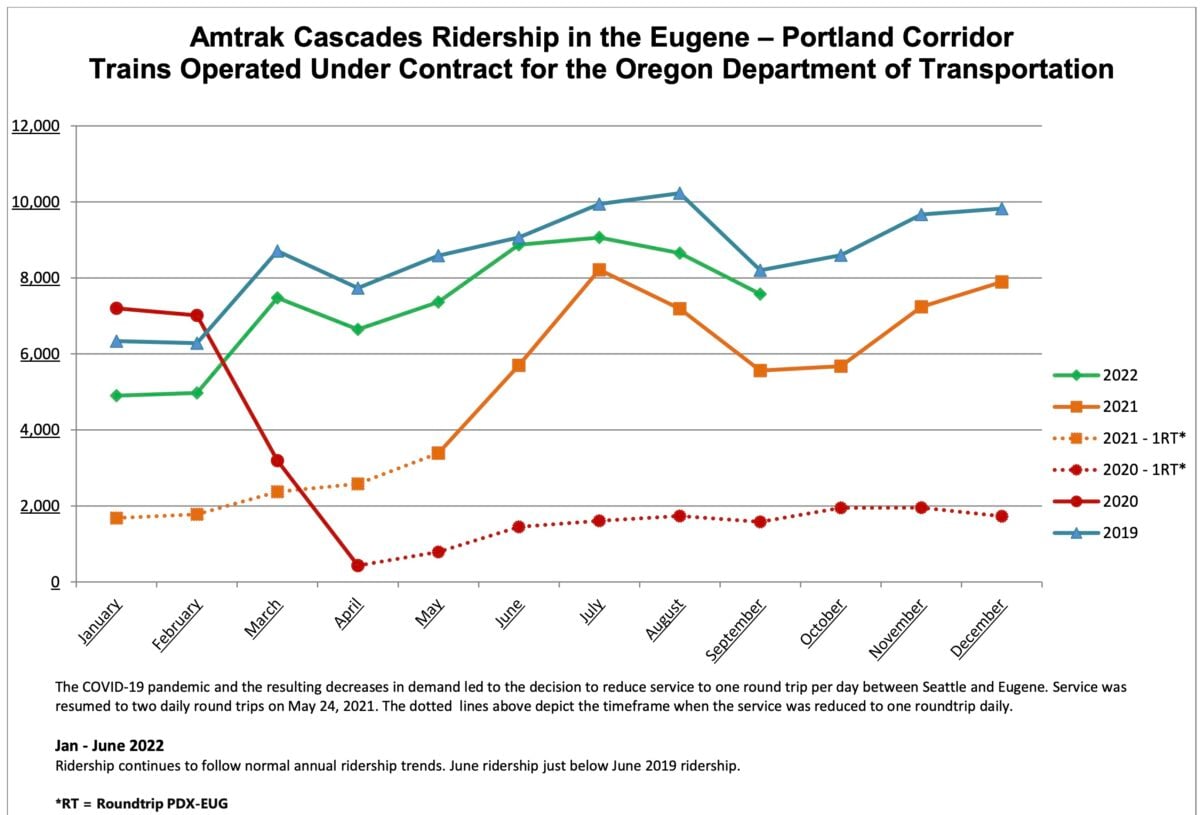
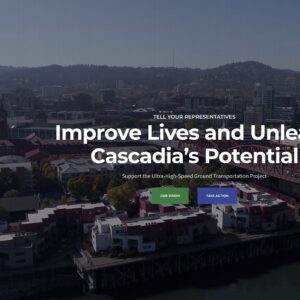

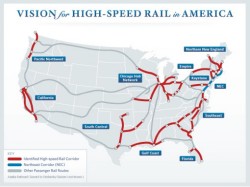

Thanks for reading.
BikePortland has served this community with independent community journalism since 2005. We rely on subscriptions from readers like you to survive. Your financial support is vital in keeping this valuable resource alive and well.
Please subscribe today to strengthen and expand our work.
ODOT needs to increase train frequency. Two daily round trips between Portland and Salem/Eugene is laughably insufficient. The service needs to be predictable and convenient to drive decent ridership. Picture how useful Cascades could be if it could be used for commutes between Portland and Salem or for Ducks games.
ODOT is planning to increase Cascades service to 6 trains a day in each direction, which is better, but still very underwhelming. The route easily justifies hourly trains at a minimum. They’re also taking way too long to fund the infrastructure improvements to do it.
Does Eugene to Portland really justify hourly trains? I mean I’d love to increase service, but there is no train route outside the Northeast that has anywhere near that level of service – including many routes that certainly have more demand than Eugene-Portland. I think the highest ridership/service route outside the NE is the Hiawatha between Milwaukee and Chicago with 8 trains per day (maybe 10 now).
I think 6 trains per day each direction is a great place to start, especially if it involves getting the service onto the old Oregon Electric line and off the UP one. Realistically, I think Portland – Seattle is the PNW rail leg that needs the most investment given the ridership potential and ODOT/WSDOT should be seriously pursuing building a new line, or buying the BNSF tracks outright.
Lyon and Avignon in France have 16 trains a day between them. Their populations (both city and Metro) are pretty similar to Portland and Eugene’s, and the distance is similar as well. If it’s frequent, quick, and reliable, people will take it.
That’s not a great comparison actually. Lyon – Avignon is not the primary route being served there, it’s Lyon – Marseilles, which is more like Portland – Seattle. A better comparison would probably be Lyon – Montpellier, which has 9 direct trains per day (but even this is a little generous, considering the trunks of this route are Lyon – Toulouse and Paris – Barcelona).
And in any case, 6 trains per day is more than most states are planning for between their largest and second largest urban areas so I’ll take what I can get for now. It’s fine to build out our passenger rail service one step at a time – but ODOT needs to actually take the steps they say they are going to with a little more urgency I think.
There are currently 12 runs a day in each direction between Eugene and Portland, counting Amtrak, POINT, Greyhound, and Flix Bus. Considering positive rail bias and the faster schedule on the train, it seems likely that the bus runs could be converted to train service with a positive impact on overall ridership. From the numbers I’ve seen (and the buses I’ve been squeezed on), the POINT runs generate good ridership, the only reason they’re buses instead of trains is that ODOT hasn’t gotten around to negotiating with UP for the track window.
Yes – but considering that a train has like 5x the capacity of an intercity bus, it’s not as simple as looking at that and saying “okay, let’s get 12 runs a day on Cascades”. For starters, we need more rolling stock for that – and the new trainsets are still 3 or 4 years away. Hopefully that will allow for the 6 planned trips, and then we can go from there.
I really think ODOT/WSDOT should be spending the freeway expansion $$ they seem to have on a dedicated, state owned passenger rail line from the Canadian border to Eugene. Doesn’t need to be 220 MPH capable, even just owning the tracks would probably allow for Amtrak to cut 15 to 20 minutes off the timetable from Portland to Seattle immediately, since there is a lot of padding currently to allow for some freight-induced delays.
Fair enough — I try to stay away from fantasy discussions & stick with what is possible, but I sometimes can’t stop myself from wandering into counterfactuals about how much ridership would result if there were actual government support for mass transit in this country. I understand that we won’t see any more than the 6 round trips a day between Portland & Eugene in the Passenger Rail EIS for decades. To me, the fact that they fill the 5 POINT buses a day, despite the fact that they’re much slower & less comfortable than the train, indicates that they could run more than 6 trains and get decent ridership on each run. I don’t think anyone is talking about filling 14 twelve car consists a day — I, like many I see commenting here, would prefer a regional rail type line between Portland & Eugene that would trade speed for higher frequency and would work fine with shorter consists.
Ok that’s it, I’m done with fantasy railroading. Time to get back to complaining about how ODOT hasn’t applied for any of the federal rail grants that have had unprecedented funding available this year.
Yeah, I mean every day I wake up in a cold sweat cursing the Federal-Aid Highway Act of 1956. It’s so incredibly frustrating how little support transit gets compared to highway building, even now. Seeing that Portland – Eugene got hourly trains on the Oregon Electric in the 20s, there’s no reason to think demand isn’t there still (sure, people drive way more now, but the population of Oregon has also quintupled). I like fantasy railroading as much as the next guy (or more!) but I do like to stay grounded in what we could physically do with the current trains/infrastructure
Don’t forget Amtrak rents the rails, so Freight trains will always get priority. This may have something to do with less trains going back and forth. Also I rode a train from Salem to Portland last summer and it was barely half full at 2:15pm. Everyone was in the observation train so it looked full, but the passenger seats were empty.
Some elected politicians have tried to get the Cascades and maybe Coast Starlight trains to be moved over to the faster route that I think goes right by the Salem waterfront or maybe the route that goes through Corvallis.
That study to move Cascades and the Coast Starlight to the former Oregon Electric (now Portland & Western) fizzled in the early 2010s I think. I think it would probably be a good move personally – better station location in Salem + an easier branch to Corvallis and it would almost certainly be more reliable than the current UP mainline.
“Renting” is not an accurate description of Amtrak’s relationship with freight rail companies. Amtrak was created to relieve rail companies of their legal obligation of providing passenger service in the 70s, and they do have legal priority over freight trains technically. There are a myriad of reasons why that isn’t the case in practice – lack of enforcement is part of it, but also freight trains that are longer than most passing sidings means it’s physically impossible to give a passenger train preference in many places.
This is a fascinating comment. It’s legally really murky, per internet search, with lots of court cases, Congressional actions, etc. Thanks for dispelling a long-held belief of mine!
110 miles take two hours by car, three hours by train. Europeans and many Asians must be getting a chuckle or two out of this.
I was recently a passenger in a car driving on an interstate highway (for the first time in 12 months) and most vehicles whipped by us at 80+ mph.
Until they hit suburban/city traffic and are going zero-to-five MPH.
To be clear: one can be productive and relaxed in journeying for three hours, doing work, having a beer, walking, stretching, playing games or talking… or stressed and unproductive (focused on driving) for two hours, at a much higher cost (about 60 cents a mile, per AAA).
Comparing time traveled as if it’s all time lost or spent the same way is just another way the car-dependent mindset sets up the debate.
Sure, but the truth of the matter is that people are pretty mode-blind; they’ll take whichever mode of transportation is quickest. The most crucial variable is time from door-to-door (although safety nominally ties). Cycling and transit could easily beat cars if we hadn’t built our cities so inefficiently, because cycling is far safer (no one’s crashing multi-ton hunks of metal and plastic at 40+ mph on a bike) and trains can safely travel far faster than cars, and neither is prone to the levels of congestion of car travel at high rates of usage.
Excusing poor rail service levels and absent cycling infrastructure with other variables of the experience isn’t going to cut it when car ownership is already nearly ubiquitous.
I marvel at the potential of Amtrak based travel. With the ease of bringing a bicycle on board a whole new world opens up for little low stress weekend jaunts. You can ride down to Albany and get out with a bikepacking rig to explore some of the coast range that sits near Corvallis without having to worry about a car. You can ride from station to station.
The frequency and 50% on time performance make me wary of trying it out, not fare price.
Something anecdotal, I took one up to Seattle over the summer, bike in tow, and ended up arriving two hours late after a passenger mistakenly got on in Vancouver and triggered an emergency stop to get off before the next stop, Longview. Not a big problem as I did not have much of a schedule I needed to adhere to that evening, but it did leave me and the other passengers at Kings Station at ~1am. Otherwise a very smooth and pleasant trip up, and my trip back later that weekend was on time and completely uneventful. I had purchased the insurance for my ticket thinking it may have offered me some protections or leverage should my bike be damaged, and while it would not have offered any help for that, it did pay for itself and my entire round trip due to the delay, with no evidence or effort beyond a single email for my claim.
Will I be taking this train again? Absolutely, provided that I can plan some flex into my schedule.
I see it as the train was priced a bit less than driving at the time, for gas and vehicle wear only, without factoring in ticket insurance payout or the baseline stress/focus required to make a 3 hour drive. A delay could have happened no matter what mode I used to make the trip, but two hours late gave me a free trip, where as idling or slowing below 35mph would have only cost me more in a car.
I always enjoy reading you, Pockets!
This kind of trip is exactly what I thought of after reading this. Corvallis area has some nice biking if I remember. I wasn’t much of a biker when I lived there.
What would really be great is a passenger/car carrying train that went east!! The gorge is awful in winter and to put a car on a train and travel east would be great!
There used to be a train that went East. But it was shut down because of a lack of ridership. I heard some people in Union county, specifically La Grande where Eastern Oregon University lies were trying to get Amtrak to reopen the line but no luck so far.
Was it really shut down due to lack of ridership, or was it lack of funding? Can you cite any sources?
I know that George W Bush tried to zero out Amtrak funding in every budget, and while he wasn’t successful, their budget was squeezed throughout his presidency. I don’t know the specifics of how that impacted every route though.
1997, the year the route was shut down, is four years before George W. Bush was in office. I think he was a terrible president, but this can’t be blamed on him.
Like I said, I don’t know the specifics of each route. I do know that W wasn’t the first Republican (or Democrat, for that matter) to propose slashing Amtrak’s budget, though. Do you have actual information about whether the Pioneer was cut due to “lack of ridership” or because Amtrak’s budget was cut?
A return of the Amtrak Pioneer train is needed. It last went in 1997.
The Empire Builder (#27/28) still goes on the Washington side of the gorge to Spokane via Pasco and a few other towns, then joins/splits off the Seattle Empire Builder to/from Chicago – great views of the back side of Mt. Hood, Multnomah Falls, etc.
Once upon a time there was the Amtrak Pioneer, part of the California Zephyr from Chicago to Salt Lake City where it split off, then Boise, Pendleton, Dalles, Sullivan’s Gulch, etc, on the Oregon side of the gorge. I took it once in the early 2000s. I think it was discontinued in 2006 or so.
Amtrak used to have a seasonal route to Astoria in the 2010s.
The only car-carrying Amtrak train is along the east coast, summers only.
That route to Astoria was just a decennial Lewis and Clark celebration train I think. But every day we mourn the loss of the Pioneer, it last ran in 1997.
The Auto Train runs year round – but it requires a level of specialized infrastructure that I would think makes it unlikely to expand to the west coast. Or a company other than Amtrak to work directly with a freight carrier like the original Auto Train Company did in the 70s
A good first step, but they need to expand the rail service. There are plenty of parts of Oregon that would be well served by a train line.
I used to ride the train a lot back in the 2010s with my bike. It would take me 3 hours from doorstep to doorstep.
I’d ride about 4 miles to the train station in Portland, walk my bike on, and then get off in Albany and ride about 3 miles to my family’s house.
Nothing was negative about it, one time I rode during Christmas Eve and the food cart wasn’t getting their contract renewed. The clerk gave me all the food and drink I could consume for free, pretty memorable.
The only thing that bothers me is the time. I drive now to Albany and it takes me about an hour and half. It is nice to have my own space, I don’t worry about getting sick and it adds an additional 3 hours to my weekend. Driving is a little stressful but the train is very pleasant so it’s really a wash.
I’m going to be going down there in a couple weeks and I’ve contemplated the train, but there’s just no taxi service in Albany to get around, so I’m going to drive. It’s too cold to ride. I wish I had the determination that I had in my early twenties.
Good perspective. Perhaps some investment in local transit in small town and rural communities is in order?
Actually the shortest scheduled train trip between Portland & Eugene is 2 hours 35 minutes — that’s the northbound 500 & 508. In my experience the northbound train trips are pretty reliable & comparable travel time to driving between Eugene & downtown Portland, which probably averages closer to 2 hours but realistically you need to allow for 2:30. Not sure it’s fair to round down the car trip to 2 hours and round up the train trip to 3 hours.
But yeah it’d be great if there were a plan for faster or more frequent trains in the Willamette Valley but there isn’t, and won’t be without a significant political shift. This fare dip is just a normal discount for winter when ridership is low. I kind of appreciate that ODOT is promoting it but I also kind of wish they’d wait until some of the pervasive reliability issues were fixed (Q3 on-time performance averaged 58.5%) so people wouldn’t be tempted to try the train for the first time due to this fare & have a horrible experience that causes them to swear off the train (as happened to a friend of mine recently).
I disagree. I think the comparison is completely fair. Freight trains always get priority over passenger trains so it’s only fair to round up
Emergency vehicles get priority over other vehicles, so why isn’t it fair to round up for cars too?
Pfft, they could have just come here to the comments to learn that price doesn’t get people to ride public transit. What a blunder.
(This seems awesome actually)
commented this before elsewhere but really want to again bring up the oregon electric line that’s sitting right there as a parallel line through the Willamette valley we could run if we just invested half as much in our rail infrastructure as we do on cars, without having to deal with the headache of freight traffic. don’t live in Oregon anymore but I hope someone is out there pushing for this
The state would need to buy the line, but I’m not sure Genesee & Wyoming is selling.
I think more people would use Amtrak if they raised their platforms to the height of the train cars rather than require passengers to go up steps. Raleigh NC has such a platform at their new station – very easy to roll on/roll off your bike.
Yes! Having essentially no platform at even Portland Union is a joke. It’s a very, very cheap way to improve rider experience and thereby enhance ridership…not to mention become ADA compliant. Level boarding is the standard in much of the world, and there’s no reason to accept anything less when making improvements going forward.
How much money would you consider to be”very, very cheap” to raise the Portland station’s platforms?
Especially since you need to cross one track to get to the other, “very, very cheap” would need to include a way for people to get across the now sunken tracks with a full load of luggage or with a mobility device. And you’d need to find a way to get from the now lower level of the station up to the tracks. Like every other station that deals with this, you’d need an overhead walkway or a tunnel, stairs, several elevators or escalators, and a place to put it all in the narrow space between the station and the tracks.
Like most most suggestions of this type, it’s fatally flawed. It turns out the people who run things like Amtrak aren’t complete idiots.
.
That’s because Amtrak owns those tracks, not to mention it’s electrified. It still takes about an hour longer than it really should.
I’ll second that. In addition to the ADA accessibilty Luke has noted, this would also make loading/unloading bikes far easier and faster, which may help allow for an increased capacity per train.
I don’t see how it works in practice. How do you get around once you arrive at a destination Amtrak station? I think I will always be driving my truck.
Depends where you go. I usually walk, bike, or take a local bus to get to my final destination. You can also take an uber/taxi, but that’s difficult in small towns. There will always be trips where that is impractical or impossible. The important thing is that for trips where the train does make sense, people choosing it gets cars off the road. Lower CO2 emissions and less traffic for those who have to drive.
In Eugene? Walk, take a bike share, call a cab, ride the bus, bring your bike on the train etc. It’s a pretty easy city to get around without a car in my experience. You could even rent a car if you feel like you are unable to function in a city without a car for some reason
For an additional $10 per ticket, round trip or single, you can bring your bike. Those spaces are limited however, and while my experience left me confident in doing it again, others may simply not have the option.
From there we can look at walk-ability of our destinations and at other modes of public transit. Neither Amtrak nor TriMet(or local equivalent) exist in a vacuum, this opens the door for additional pressure to improve those services and make them accessible and attractive. ODOT wants us to take a train? Then they need to be held accountable and push to ensure there are buses to move us when we arrive. Beyond that we have ride shares, bike shares and scooters. While far from perfect or accessible to all, there are systems in place that we can push to improve.
All that said, there will still be times when the train just isn’t viable. Ultimately while trains won’t work for everyone, they have the chance to greatly improve travel for a much greater group than they currently serve. I’d urge you to consider that being supportive of them would leave you more room to park and less traffic to drive through to get there.
Growing up on the East Coast, I often took Amtrak between Washington DC-Philly (college to home), even riding all the way up to Boston or beyond a time or two.
Washington DC to Philly is roughly 150 miles, and takes about 2 hours driving with zero traffic, but routinely is more like 3.5 hours with traffic. The train is just over 2 hours, pretty much every time, and it’s rare to have delays
Amtrak is actually quite a bit more expensive than driving, even with the $15-20 of tolls you’ll pay, but the train is almost always full.
Why? Because traffic is so terrible and so stressful to drive in. Especially for business travel, the train makes so much more sense. Passengers are willing to pay extra to take the train to avoid traffic delays.
Heading from Portland to Eugene by car, there is hardly ever any traffic for the vast majority of the trip, especially in the middle of the day (At least compared to the east coast mid-atlantic corridor. Traffic is relative, right?)
What is my point? Car’s offer so many major advantages (freedom/flexibility/ability to carry stuff), people are willing to pay extra to bring them. On the east coast, Trains can actually offer a major advantage (skip the traffic), people will pay up, and also give up the advantages that come with driving.
In my mind, investing Portland-Seattle makes a ton more sense than Portland-Eugene, at least until we have major congestion between Portland-Eugene.
It’s 175 miles from Portland to Seattle. The train ride from Portland to Seattle is over 4 hours. Driving is 2.5 hours with no traffic. Not only is the traffic not nearly as bad Portland-Seattle as DC-Philly but the train takes twice as long. No wonder no one takes train.
Train is my favorite form of transport, but passenger travel is not viable for those for whom time is important and I don’t believe cost was a significant factor in decisionmaking — the freight priority is a way bigger deal than cost.
Don’t get me wrong. I’m liking this and I think the reliability of auto transport is drastically overexaggerated. It takes very little to make that 2 hour trip by auto be much more. And it’s much more fun to be stuck on a train than in a car going nowhere.
After being stranded with no way to get home, I kinda despise Amtrak now. And I say this as someone who has ridden Seattle-Portland 50+ times and Bellingham-Portland ~15 times.
I used to take the train from Portland down Eugene in Portland up to Seattle all the time and honestly it is still my preferred mode of travel. I really hate driving on either of those two slogs, they’re just long straight and boring.
It would be nice if there was a train that made it down to Ashland or the Bay area, but apparently this country doesn’t know how to build transit.
Flying to the Bay area is somewhat short but still not great.
The Coast Starlight train goes from Seattle to Los Angeles, but all long-distance Amtrak trains don’t have the tilt technologies of Talgo’s trains which coukd make new Superliners faster, safer, and more comfortable. The current freight train route to and through Ashland might not be as fast as the one through Ashland.